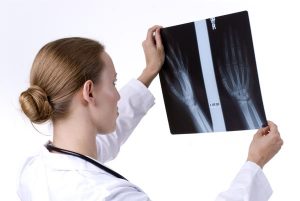Terahertz (THz) spectroscopy, and especially terahertz imaging, holds large potential in the field of nondestructive, contact-free testing. The ongoing advances in the development of THz systems, as well as the appearance of the first related commercial products, indicate that large-scale market introduction of THz systems is rapidly approaching.
Terahertz waves have directivity similar to laser light. The wavelengths of THz waves are measured in tens and hundreds of micrometers. THz waves can produce images with a resolution like that of images viewed with the human eye under visible light when the waves are detected in two or three dimensions after being transmitted through, or reflected by, the target object. In fact, terahertz waves can be transmitted through materials such as plastic and wood. This allows an analysis of their internal structure.
Already being used in airport security checkpoints, terahertz imaging has a number of other promising applications: from explosives detection to avoiding collisions in cars. Similar to sonar and radar, terahertz imaging produces an image by comparing measurements across an array of sensors. Since the distance between sensors is proportional to wavelength, those arrays must be very dense.
Researchers in MIT’s Research Laboratory for Electronics are developing a new technique that could reduce the number of sensors required for terahertz, or millimeter-wave imaging by a factor of 10, or even 100, making the use of THz imaging more practical. This technique could also have positive implications for the design of new, high-resolution radar and sonar systems.
In contrast to X-ray radiation, terahertz radiation is non-ionizing, and therefore safe for humans. Hence, this is a decisive advantage of terahertz imaging as compared to x-rays. THz exhibits an extremely low photon energy so that there is no danger to chemical bonds being broken up, and potentially changing the material that is being examined as there is with x-rays. Also, the emitted power is very low, leading to insignificant heating.
In the scientific world, terahertz imaging could provide information in chemistry and biochemistry. Recently developed methods of THz time-domain spectroscopy and THz tomography have been shown to be able to perform measurements on, and obtain images of samples which are opaque in the visible and near-infrared regions of the light spectrum.
Since THz imaging is non-ionizing, and thus is not expected to damage tissue and DNA, it could potentially begin to be used more in medical imaging. Some frequencies of THz radiation can penetrate several millimeters of tissue with a low water content and reflect the images. Such methods could allow effective detection of epithelial cancer with a safer, less invasive, or painful system using imaging.
Terahertz imaging is a relatively new way to examine many areas of our world. Design and development of medical and security equipment will continue to grow. Employing Universe Optics to design and manufacture the precision lenses required in each individual sensor and camera will ensure your specific equipment is on the cutting edge of THz technology.
The potential uses of THz imaging exist in many different environments. As mentioned, from medical and security to high-altitude telecommunications, the field will continue to expand. UKA looks forward to working with you on your specific camera using THz imaging.